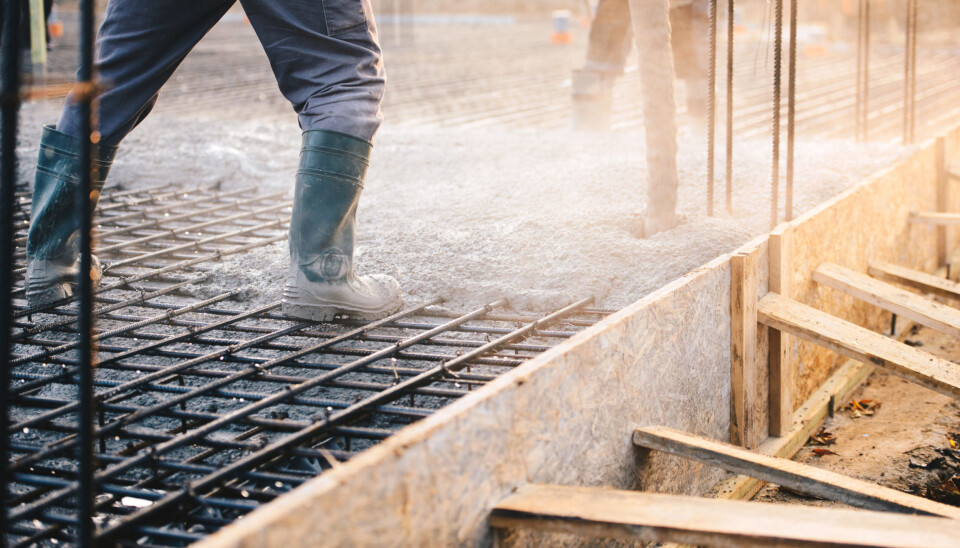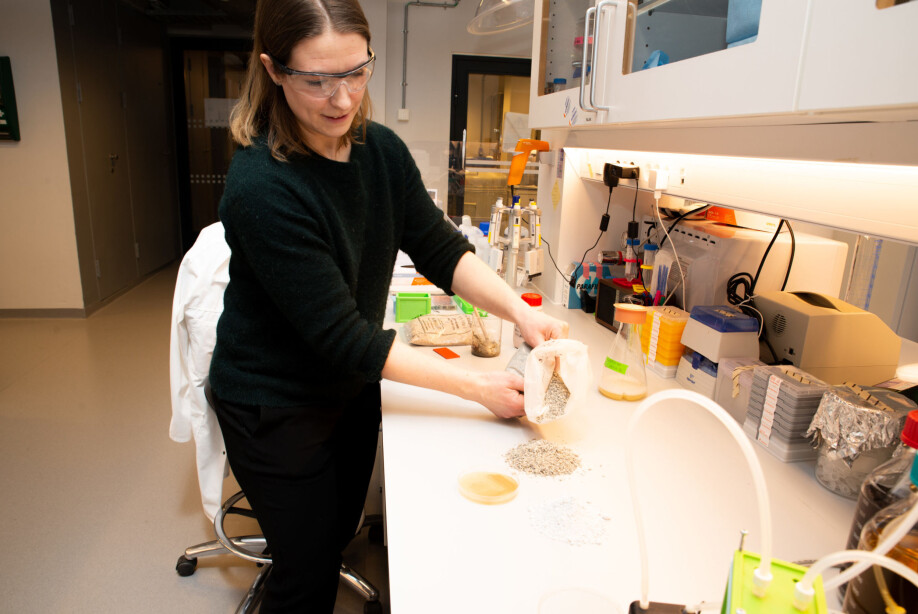THIS ARTICLE/PRESS RELEASE IS PAID FOR AND PRESENTED BY NTNU Norwegian University of Science and Technology - read more

Bacteria-based concrete offers climate benefits
Ten cubic kilometres of concrete, equivalent to the volume of Mount Everest, are used in construction projects every year, resulting in huge volumes of emissions. But a new eco-friendly cement may help to reduce our global climate footprint.
“The building industry emits huge volumes of CO2,” says SINTEF researcher Simone Balzer Le, who is part of a cross-disciplinary research team currently developing a biological cement called BioZEment. “The manufacture of cement, which is a binding agent in concrete, alone accounts for more than five per cent of global greenhouse gas emissions.”
No emissions – no warming
In conventional cement production, limestone is heated to a temperature of 1450 degrees. The process is called calcination and results in the release of huge volumes of greenhouse gas (GHG) emissions in the form of CO2.
“There are currently many ways of reducing these volumes,” says Balzer Le. “Our options include capturing the CO2 gas, partially substituting the cement with another binding agent, or finding a way of making cement without heating. This is the approach we are using in the development of BioZEment,” she says.
If the researchers succeed in advancing this last approach, it may have a massive influence on reducing the volumes of GHG emissions produced by the building sector.
“Our estimates indicate that using this material could reduce global emissions by up to 80 percent compared with conventional cement, although BioZEment cannot be used for all building applications in its present form. However, it will be able to contribute to the construction sector’s collective efforts to reduce CO2 emissions.”

Bacteria instead of heating
The process starts by mixing ground limestone particles and sand in the conventional way. But instead of heating the limestone, specific bacteria are added, which the researchers have discovered close to a limestone quarry in Verdal, Norway.
“The bacteria produce organic acids, including lactic and acetic acid,” says Balzer Le. “These help to reduce the pH value of the mixture and so partially dissolve the limestone, releasing calcium ions and carbonate.”
“Step two involves mixing sand with another form of bacteria in a mould and feeding this with the prepared mixture of partially dissolved limestone and urea. These bacteria produce an enzyme that splits the urea, which causes the pH to increase again. Under such conditions, calcium is formed together with calcium carbonate crystals, and it is these crystals that act as the binding agent in bacteria-based concrete,” she explains.
After drying, the material in the mould becomes solid. In essence, this method is an extension of the well-known biogeochemical process known as Microbially-Induced Calcite Precipitation (MICP). Calcium carbonate precipitates as result of the interaction between natural minerals and bacterial metabolism. MICP is used, among other things, by the American company bioMASON to manufacture and stabilise subsoils.
“The advantage of our approach is that both the calcium and the carbonate are derived from the limestone, which enables us to reduce the use of urea compared with another commonly applied form of MICP that obtains its carbonate solely from urea,” says Balzer Le.
Start by making bricks
The researchers have been looking into a number of different ways of applying this technology. The most straightforward approach will most likely be to manufacture bacteria-based bricks, which will probably cost only about ten percent more to make than standard bricks.
“Making bricks will enable us to develop the process, but we’re also looking into more commercial applications of the material that will reduce production costs,” says Balzer Le. “The most realistic scenario will be to make commercially-manufactured bricks that can be transported directly from a factory to a construction site,” she says.
Practical and recyclable
It is too early to say how this biological cement will perform in terms of quality.
“It will not be as strong as conventional concretes, but there are applications where its material strength will probably be more than adequate,” says Balzer Le, adding that there are many potential ways of making BioZEment concretes stronger. These include a variety of types of reinforcement using either aluminium or cellulose fibres derived from timber, both of which will make the material practical for a number of different applications.
The researchers also recognise the potential to recycle BioZEment.
“This will result in less use of raw materials, making this a very exciting field of research for us,” says Balzer Le.
See more content from NTNU:
-
Why are pregnant women in Norway so worried?
-
Politics on Facebook: Populist parties choose divisive issues on purpose
-
Social media is connected to cyberbullying – but not how we thought
-
Forskere ved NTNU får nesten 24 millioner av EU for å lage nye strømomformere
-
This helps the youngest children enjoy school more
-
Can we tap the ocean’s power to capture carbon?





































